Best Keyboard Type for Programming: A Buyer’s Guide for 2024
Updated: 05/11/2023
226
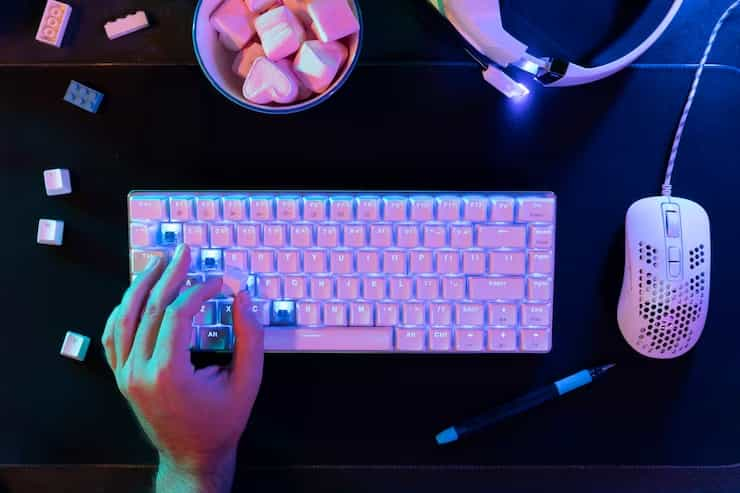
Do you spend hours typing code every day? If so, you know how important it is to have a suitable keyboard.
The best keyboard type for programming is the one that best suits your individual needs and preferences. However, there are a few factors that all programmers should consider when choosing a keyboard, such as switch type, layout, features, and price.
In this article, we’ll look at the best keyboard types for programming and discuss the factors to consider when choosing a keyboard. We’ll also provide tips for choosing the right keyboard for your needs.
Why is it Important to Choose the Best Programming Keyboards for Programmers or Developers?

Choosing the best keyboard for programming is essential for several reasons. First, it can help you to improve your typing speed and accuracy. This is important because programmers and developers spend a lot of time typing, and increasing your typing speed and accuracy can increase productivity.
Second, the right keyboard can help to reduce fatigue and discomfort. This is important because programmers and developers often spend long hours typing and using a keyboard that needs to be better suited to your needs can lead to hand pain and other problems.
Finally, the right keyboard can help to improve your overall typing experience. This is important because typing should be enjoyable, and using a keyboard you like will make you more likely to want to type.
What are the Different Types of Keyboards Available?
Three main types of keyboards are available: membrane, mechanical, and optical.
- Membrane Keyboards: Membrane keyboards are the most common type of keyboard. They are relatively inexpensive and quiet but less durable and responsive than mechanical keyboards.
- Mechanical Keyboards: Mechanical keyboards use individual switches for each key. This makes them more durable and responsive than membrane keyboards, but can also be more expensive and noisy.
- Optical Keyboards: Optical keyboards use light sensors to detect key presses. They are similar to mechanical keyboards in durability and responsiveness but generally quieter.
In addition to these three main types, several specialized keyboards are available, such as ergonomic, gaming, and multimedia.
Best Keyboard Type for Programming
Finding the right keyboard type for programming is essential for improving your typing speed, accuracy, and comfort. This can lead to increased productivity and reduced fatigue. This section will explore the best keyboard types for programming, their pros and cons, and popular brands and models.
1. Mechanical Keyboards
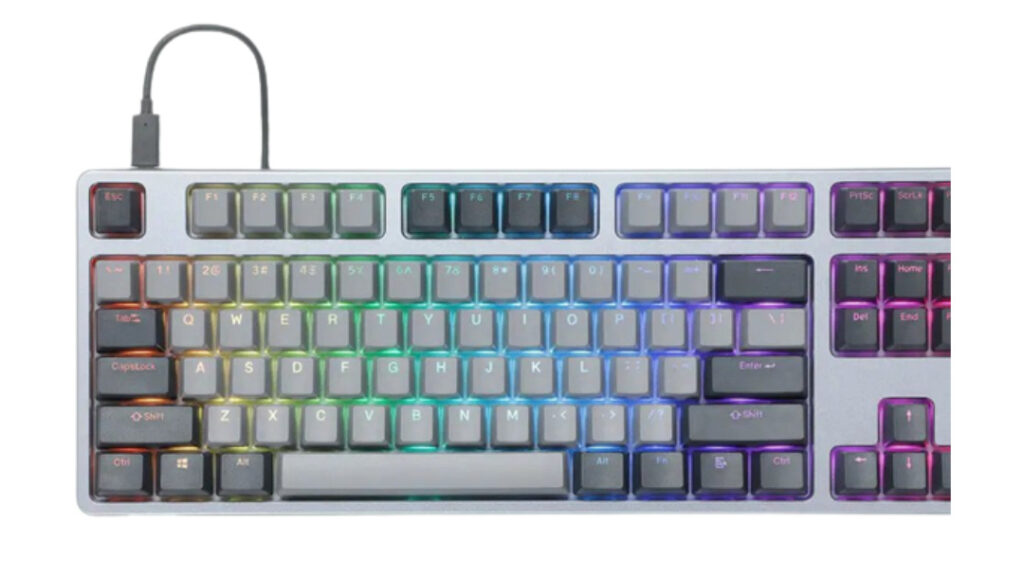
Mechanical keyboards are the best type of keyboard for programming because they are durable, responsive, and customizable. They use individual switches for each key, which makes them more durable and responsive than membrane keyboards. Mechanical keyboards are also customizable, so you can choose the type of switches, keycaps, and other components to create a perfect keyboard.
Why are Mechanical Keyboards Good for Programming?
- Durable: Mechanical keyboards are built to last. They use individual switches for each key, which can withstand millions of keystrokes.
- Responsive: Mechanical keyboards are very responsive. When you press a key, it registers immediately, without any delay.
- Customizable: Mechanical keyboards can be customized to your liking. You can choose the type of switches, keycaps, and other components to create a keyboard that is perfect for you.
Pros and Cons of Mechanical Keyboards for Programming
| Pros |
|---|
|
| Cons |
|---|
|
Popular Brands and Models of Mechanical Keyboards for Programming
| Keyboard | Programming | Size | Hot-Swappable Switches | Connectivity | Price | Features |
|---|---|---|---|---|---|---|
| Cherry MX Board 6.0 | Good | Compact (60%) | Yes | Wireless | $150 | Backlighting, programmable keys, macros |
| Corsair K70 RGB MK.2 Low Profile | Good | Full-size | No | Wired | $175 | Backlighting, programmable keys, macros |
| Logitech G Pro Mechanical Gaming Keyboard | Good | Tenkeyless (TKL) | No | Wired | $120 | Backlighting, programmable keys |
| Razer BlackWidow Lite | Good | Tenkeyless (TKL) | No | Wired | $130 | Backlighting, programmable keys |
| Ducky One 3 SF | Excellent | Compact (65%) | Yes | Wired | $140 | Backlighting, programmable keys |
| Keychron K2 V2 | Excellent | Compact (65%) | Yes | Wired/wireless | $100 | Backlighting, programmable keys |
| Leopold FC750R PD | Excellent | Compact (75%) | No | Wired | $160 | Backlighting, programmable keys |
2. Ergonomic Keyboards
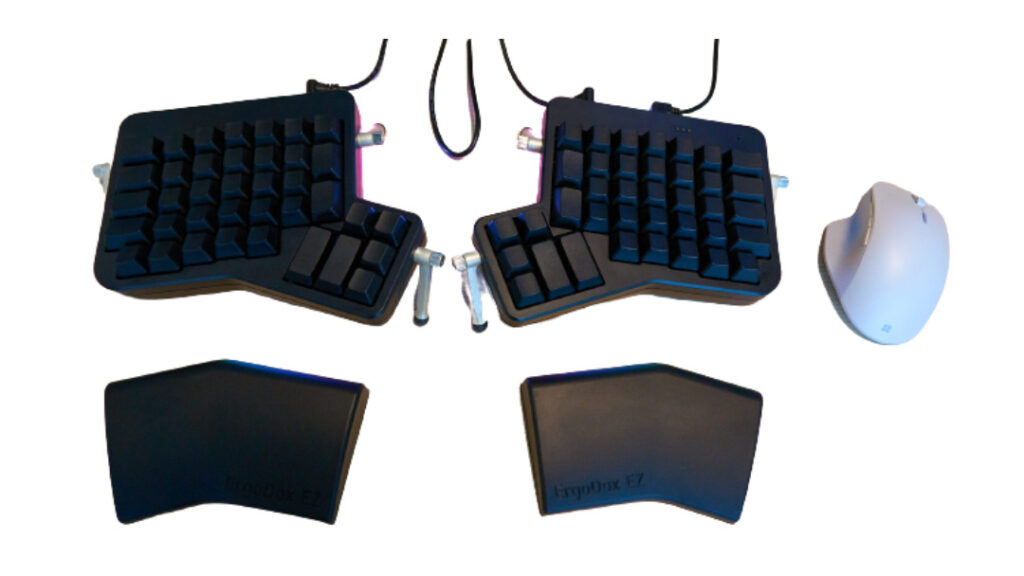
Ergonomic keyboards are designed to reduce fatigue and discomfort during prolonged use. They often have split layouts and curved keybeds, which help keep your wrists and hands more natural. This can be especially beneficial for programmers, who often spend hours typing daily.
Pros and Cons of Ergonomic Keyboards for Programming
| Pros |
|---|
|
| Cons |
|---|
|
Popular Brands and Models of Ergonomic Keyboards for Programming
| Keyboard | Programming | Size | Hot-Swappable Switches | Connectivity | Price | Features |
|---|---|---|---|---|---|---|
| Kinesis Advantage2 | 7.3 | Split | Yes | Wired | $349 | Fully customizable layout, programmable keys and macros, tenting and tilting options |
| ErgoDox EZ | 7.5 | Split | Yes | Wired | $349 | Curved keybed, split spacebar, palm lift, tilt, and tenting options |
| Microsoft Sculpt Ergonomic Keyboard | 7.2 | Full-size | No | Wired | $129 | Curved keybed, split spacebar, cushioned palm rest |
| Logitech Ergo K860 | 7.4 | Full-size | No | Wireless | $129 | Curved keybed, split spacebar, palm lift, tilt and tenting options |
| HHKB Professional Hybrid Type-S | 7.6 | Compact (60%) | No | Wired | $259 | Topre switches provide tactile feedback with quiet operation, compact design is portable and saves space |
3. Low-profile Keyboards
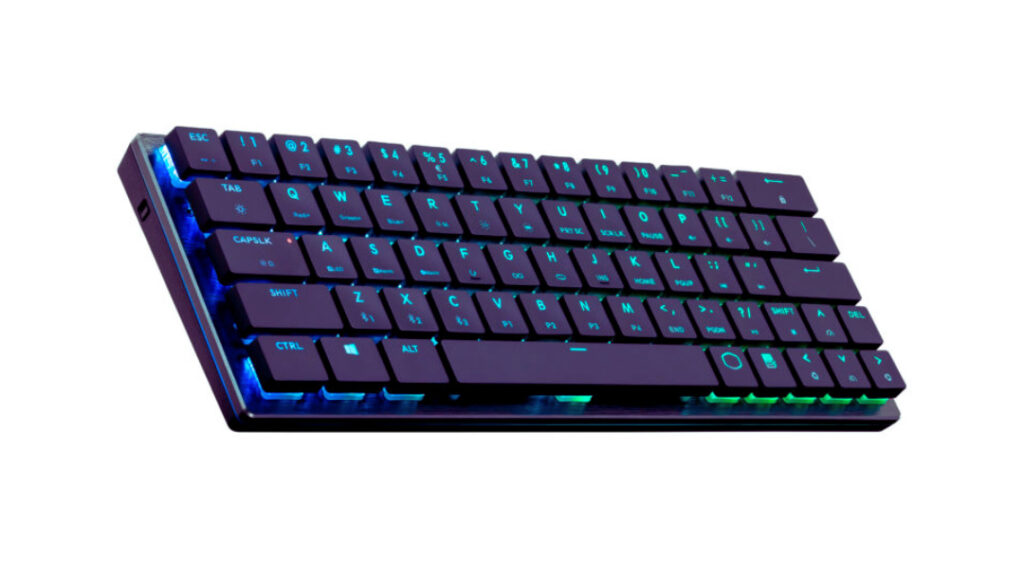
Low-profile keyboards have shorter key travel distances and a lower overall profile than traditional ones. This makes them more comfortable to use for long periods and can also help to reduce the risk of repetitive strain injuries (RSIs).
Pros and Cons of Low-profile Keyboards for Programming
| Pros |
|---|
|
| Cons |
|---|
|
Popular Brands and Models of Low-Profile Keyboards for Programming
| Keyboard | Programming | Size | Hot-Swappable Switches | Connectivity | Price | Best Features |
|---|---|---|---|---|---|---|
| Cherry MX Board 6.0 Low Profile | 7.8 | Full-size | No | Wired | $175 | Cherry MX low-profile switches, RGB backlighting, programmable keys |
| Corsair K70 RGB MK.2 Low Profile | 7.7 | Full-size | No | Wired | $169 | Corsair low-profile switches, RGB backlighting, programmable keys, aluminum frame |
| Logitech G915 TKL | 7.6 | Tenkeyless | No | Wireless | $249 | Logitech GL low-profile switches, RGB backlighting, wireless connectivity, long battery life |
| Razer BlackWidow Lite | 7.5 | Tenkeyless | No | Wired | $130 | Razer low-profile switches, RGB backlighting, compact and portable design |
| Ducky One 3 Mini | 7.4 | 60% | Yes | Wired | $119 | Cherry MX low-profile switches, RGB backlighting, hot-swappable switches, compact and portable design |
| Keychron K3 | 7.3 | 75% | Yes | Wired/wireless | $89 | Optical low-profile switches, RGB backlighting, hot-swappable switches, affordable price |
| NuPhy Air75 | 7.2 | 65% | Yes | Wired/wireless | $129 | Gateron low-profile switches, RGB backlighting, hot-swappable switches, wireless connectivity |
4. Custom Keyboards
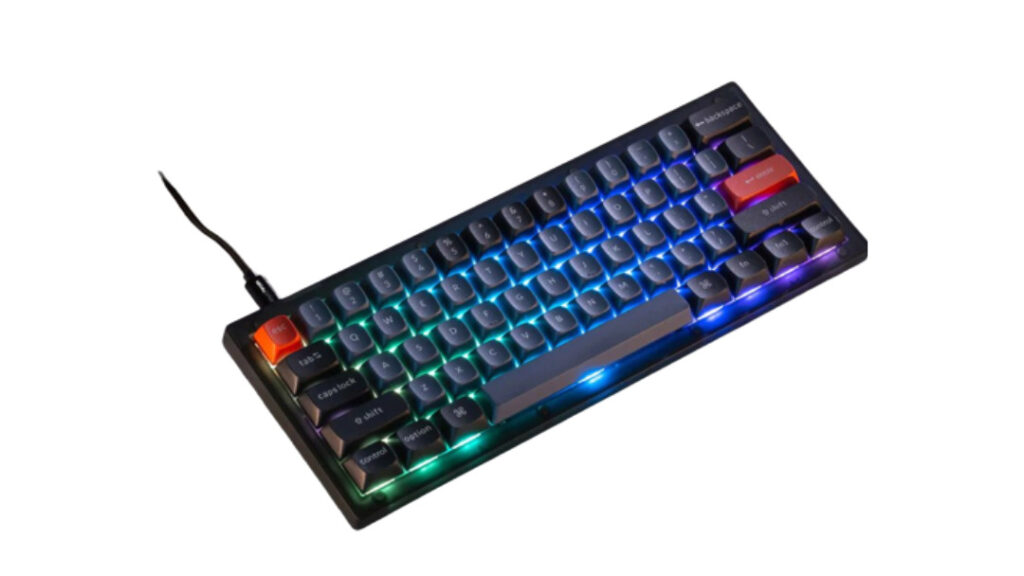
Custom keyboards are keyboards that are designed and built by the user. This allows the user to choose the exact components and features they want, such as the type of switches, the keycaps, and the layout.
Pros and Cons of Custom Keyboards for Programming
| Pros |
|---|
|
| Cons |
|---|
|
Popular Brands and Models of Custom Keyboards for Programming
| Brand | Model | Switches | Keycaps | Price | Features |
|---|---|---|---|---|---|
| Keeb.io | Sinc | MX | Dye-sub PBT | $150 | Fully customizable layout, hot-swappable switches, high-quality components |
| Kinesis Advantage2 | Cherry MX Brown | ABS | Split | $349 | Ergonomic split design, hot-swappable switches, programmable keys, and macros |
| ErgoDox EZ | Gateron Yellow | PBT | Split | $349 | Compact and portable design, hot-swappable switches, programmable keys, ortho-linear layout |
| Sentraq S65-X | Kailh Speed Silver | PBT | 65% | $250 | Aluminum frame, hot-swappable switches, RGB backlighting, programmable keys |
| Planck | Gateron Brown | DSA | 40% | $150 | Compact and portable design, hot-swappable switches, programmable keys |
| Preonic | Gateron Brown | DSA | Ortholinear | $175 | Compact and portable design, hot-swappable switches, programmable keys, ortholinear layout |
| Minivan | Gateron Brown | DSA | 40% | $125 | Compact and portable design, hot-swappable switches, programmable keys, split design |
| Corne | Gateron Brown | DSA | Split | $125 | Compact and portable design, hot-swappable switches, programmable keys, split design |
| NovelKeys NK87 Pro | Gateron Yellow | PBT | 80% | $200 | Aluminum frame, hot-swappable switches, RGB backlighting, programmable keys |
| Keychron Q2 | Gateron Phantom Brown | PBT | 65% | $160 | Aluminum frame, hot-swappable switches, RGB backlighting, programmable keys, gasket mount |
| Akko ACR Pro 67 | Gateron Yellow | PBT | 67% | $180 | Aluminum frame, hot-swappable switches, RGB backlighting, programmable keys, gasket mount |
5. Best Portable Keyboard for Programmers: The Glorious GMMK Pro
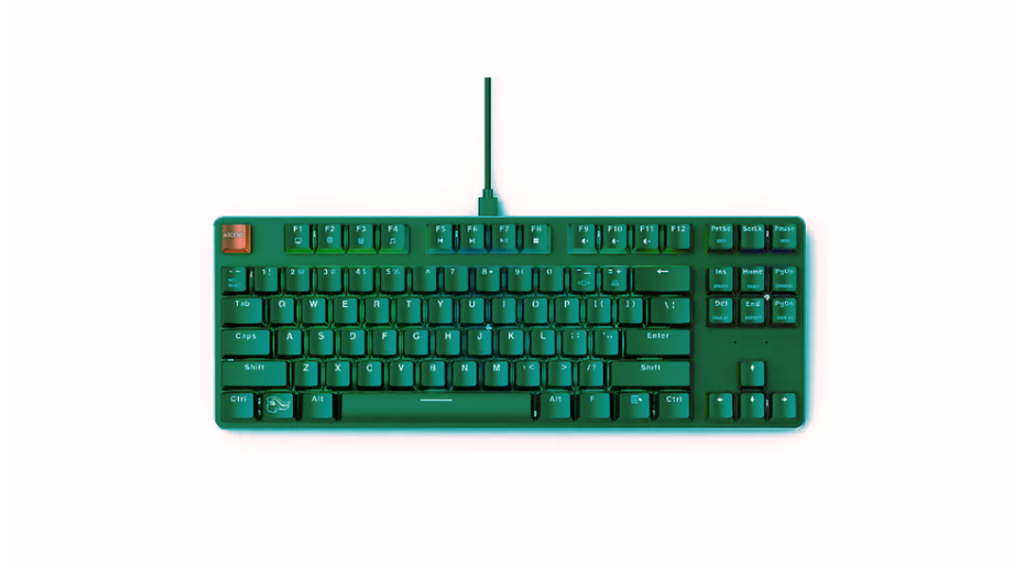
The Glorious GMMK Pro is a tenkeyless keyboard perfect for programmers on the go. It features a durable aluminum case, removable braided cord, and Gateron brown switches. The GMMK Pro is also highly customizable, allowing you to swap out the switches and replace them with any Cherry, Gateron, or compatible switches. You can customize the RGB lighting and remap all the keys using the manufacturer’s software or the open-source QMK firmware.
SPECIFICATIONS
- Form factor: Tenkeyless (87 key) – The keyboard is compact and portable but still has all the essential keys you need for programming.
- Numeric keypad: No – This is ideal for programmers who don’t need the numeric keypad, as it saves space on the desk.
- Switches: Gateron Brown – These switches are tactile and quiet, making them ideal for typing and coding.
- Ports: USB-C – This is the latest and greatest USB connector, and it is reversible, so you don’t have to worry about plugging it in the wrong way.
- Other features:
- A removable braided cord makes the keyboard more portable and more accessible to pack.
- Swap out the switches, keycaps, and RGB lighting to create a perfect keyboard.
- QMK firmware support gives you even more customization options, such as remapping keys and creating macros.
REASONS TO AVOID
- No dedicated media keys: This is not a major drawback, as you can still control media playback using the function keys. However, if you frequently use media keys, this may be a deal-breaker for you.
6. Best Compact keyboard for Programmers: Obinslab Anne Pro 2
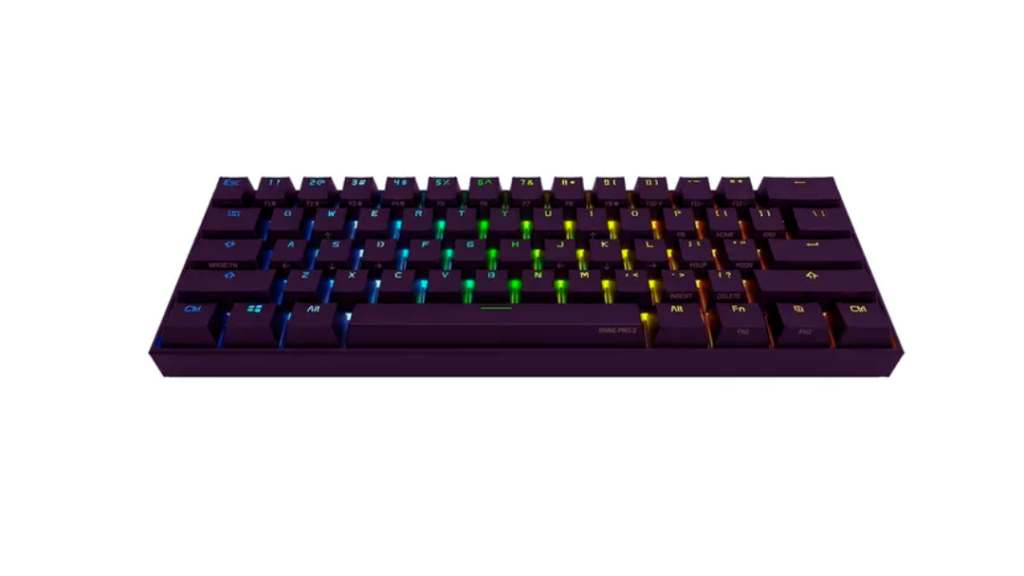
The Obinslab Anne Pro 2 is a 61-key keyboard perfect for programmers needing a compact, portable keyboard. It features a durable aluminum case, hot-swappable switches, and RGB backlighting. The Anne Pro 2 is also highly customizable, allowing you to remap keys and create macros using the manufacturer’s software.
Specifications:
- Form factor: 61-key
- Switches: Gateron Brown (default), but hot-swappable with any MX-compatible switch
- Backlighting: RGB
- Connectivity: USB-C
- Other features: PBT keycaps, programmable macros, QMK firmware support
Reasons to avoid:
- No dedicated media keys
- A 61-key layout may be too small for some users
7. Best Wireless Keyboard for Programmers: Logitech MX Keys
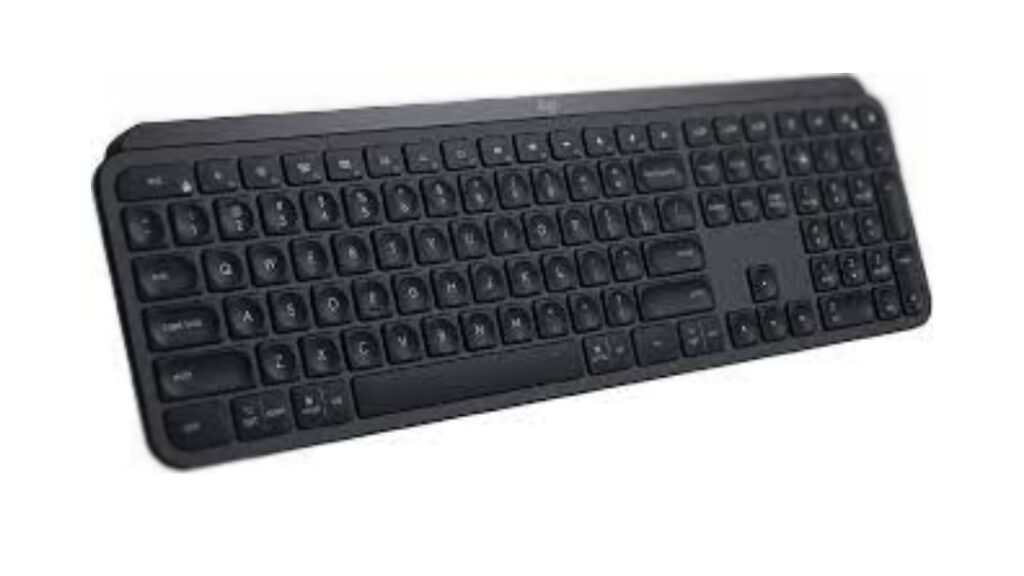
The Logitech MX Keys is a wireless keyboard perfect for programmers who need a comfortable and reliable keyboard. It features a comfortable key layout, long battery life, and multi-device support. The MX Keys are also highly customizable, allowing you to remap keys and create macros using the Logitech Options software.
Specifications:
- Form factor: Tenkeyless (87 key)
- Switches: Logitech Perfect Stroke switches
- Backlighting: Yes, white
- Connectivity: Bluetooth Low Energy and USB-C
- Other features: Palm rest, multi-device support, Logitech Options software
Reasons to avoid:
- Expensive
- Some users have reported issues with the Bluetooth connection.
8. Best Mac Keyboard for Programmers: Apple Magic Keyboard with Keypad
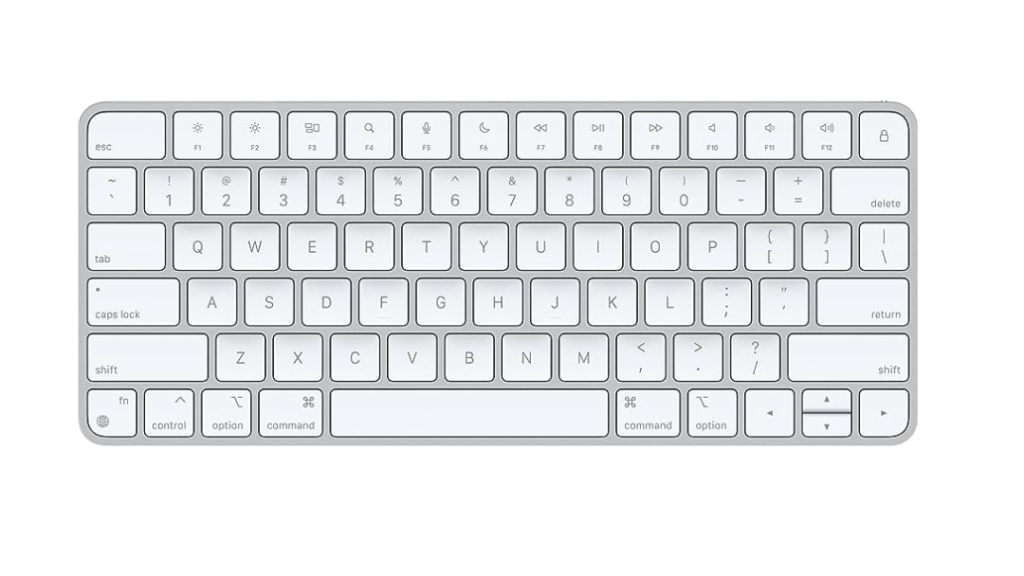
The Apple Magic Keyboard with Keypad is the best Mac keyboard for programmers thanks to its comfortable and efficient typing experience, sleek and stylish design, and specifically designed features. These features include a dedicated numeric keypad, function keys, and a Touch ID sensor for quickly logging in to your Mac.
Specifications:
- Form factor: Full-size
- Switches: Scissor
- Backlighting: Yes
- Connectivity: Bluetooth or Lightning
- Other features: Numeric keypad, function keys, Touch ID sensor
Reasons to avoid:
- Expensive
- No hot-swappable switches
9. Best Keyboard for Programmers on a Budget: EVGA Z15
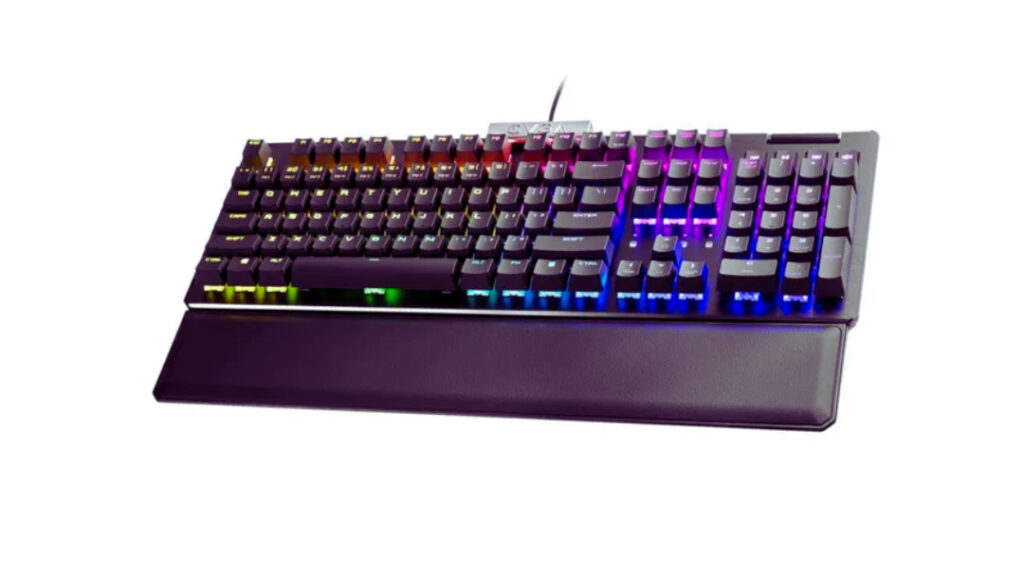
The EVGA Z15 is the best keyboard for programmers on a budget. It offers a comfortable typing experience with tactile and quiet Gateron Brown switches, a durable construction with an aluminum frame and polycarbonate top plate, and features specifically designed for programmers like a dedicated numeric keypad, function keys, and media keys. All of this is available at a very affordable price.
Specifications:
- Form factor: Full-size
- Switches: Gateron Brown (default), but hot-swappable with any MX-compatible switch
- Backlighting: RGB
- Connectivity: USB-C
- Price: $100
- Other features: PBT keycaps, programmable macros, QMK firmware support
Reasons to avoid:
- None at this price point
Tips for Choosing the Right Keyboard for Programming
- Set a budget before shopping
- Consider features like switches, layout, backlighting, wrist rest, and media controls.
- Try out keyboards in person to get a feel for them
- Read reviews to learn more about the pros and cons
- Look for keyboards with a dedicated numeric keypad
- Consider keyboards with mechanical switches for more tactile and responsive typing.
- Look for keyboards with programmable macros to automate tasks
- Consider keyboards with a split layout for a more ergonomic posture. I hope this helps!
Conclusion:
Choosing the right keyboard for programming is important, as it can significantly impact your productivity and comfort. When choosing a keyboard for programming, it is important to consider the switch type, layout, features, and price.
Mechanical keyboards are generally the best choice for programmers, offering a more tactile and responsive typing experience. Consider a keyboard with a layout that is comfortable for you and includes all the keys you need for programming. Features include backlighting, programmable macros, and a dedicated numeric keypad.
Set a budget before you start shopping so that you don’t overspend.
I hope this article has helped you to choose the best keyboard for your programming needs.
Which type of keyboards are best for coding?
Which keyboard switches are the best for programming?
Some popular keyboard switches for programming include:
Can you use a 65% keyboard for coding?
Do you need numpad for programming?
What features should I look for in a programming keyboard?
When choosing a keyboard for programming, consider the following:
- Switch type: mechanical keyboards offer the best typing experience.
- Layout: choose a layout that is comfortable for you.
- Backlighting: not essential, but helpful in low-light conditions.
- Programmable macros: can help automate repetitive tasks.
How much should I spend on a programming keyboard?
Programming keyboards can range from around $20 to $200 or more. Set a budget before you start shopping so that you don’t overspend.
Where can I buy a programming keyboard?
Programming keyboards can be purchased online or at retail stores. Some popular online retailers include Amazon, Newegg, and B&H Photo Video. Some popular retail stores that sell programming keyboards include Best Buy, Microcenter, and Fry’s Electronics.
Please Write Your Comments